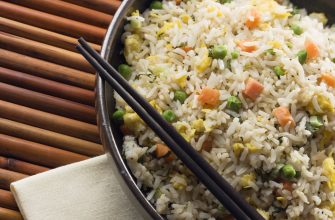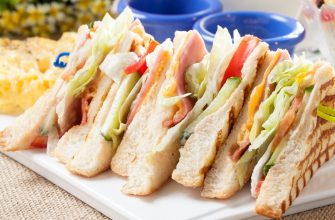Steamed Buns, an Asian Staple
Asian cuisine is known for its diverse flavors and textures, and steamed buns are no exception. These soft, pillowy delights are a staple in many Asian countries, with a wide variety of fillings and techniques. In this article, we will explore the art of making Asian steamed buns, including recipes and techniques from different regions.
-
Content
The Basics: Dough and Steaming Techniques

The foundation of any good steamed bun is the dough. A basic dough recipe includes flour, water, sugar, yeast, and a pinch of salt. To achieve the desired soft texture, it’s important to knead the dough until smooth and elastic. Once the dough is prepared, it needs to rest for about an hour before being divided into smaller portions for shaping and filling.
Steaming is the primary cooking method for these buns. A bamboo steamer is the traditional choice, but a metal steamer will work as well. The buns should be placed on small pieces of parchment paper to prevent sticking, and spaced apart to allow room for expansion during the cooking process. Steam the buns for 15-20 minutes, depending on size, until they are fluffy and cooked through.
-
Regional Variations and Fillings

Chinese Steamed Buns (Baozi): Baozi are round buns filled with a variety of ingredients, such as meat, vegetables, or sweet bean paste. The dough is often leavened with baking powder, giving it a light, fluffy texture. A popular version is Char Siu Bao, filled with barbecued pork.
Japanese Steamed Buns (Nikuman): Nikuman is the Japanese adaptation of Chinese baozi, with a slightly sweeter dough. Fillings often include ground pork, cabbage, and green onions, seasoned with soy sauce and ginger. There are also dessert variations, such as anpan, filled with sweet red bean paste.
Korean Steamed Buns (Jjinppang): Jjinppang is a popular Korean street food, filled with sweetened red bean paste. The dough is slightly denser than its Chinese and Japanese counterparts, and the buns are often larger in size.
-
Creative Twists and Modern Interpretations

Asian steamed buns have inspired chefs around the world to create their own versions, using unique ingredients and flavors. Some examples include:
- Gua Bao: A Taiwanese twist on the traditional bao, gua bao features a folded bun filled with braised pork belly, pickled vegetables, and crushed peanuts.
- Curry Buns: A fusion of Indian and Japanese flavors, curry buns are filled with a spiced curry mixture, offering a savory and spicy treat.
- Vegan Steamed Buns: With the growing popularity of plant-based diets, vegan steamed buns have emerged, using ingredients like jackfruit, mushrooms, or tofu as filling.
-
Recipes to Try at Home

Now that we have explored the different types of steamed buns and the techniques used to prepare them, here are some recipes you can try at home:
Char Siu Bao (Chinese Barbecue Pork Buns): Start by making a dough from flour, sugar, yeast, baking powder, and water. While it rests, prepare the filling by stir-frying diced barbecue pork with onion, soy sauce, oyster sauce, sugar, and cornstarch. Divide the dough into portions, flatten each into a disc, spoon in the filling, and gather the edges to form a bun. Steam the buns until fluffy and cooked through.
Nikuman (Japanese Meat Buns): To make Nikuman, prepare a dough similar to the one for Char Siu Bao, but with added milk for a sweeter taste. For the filling, mix ground pork, finely chopped cabbage, green onions, soy sauce, sake, sugar, and grated ginger. Assemble and steam the buns in the same way as Char Siu Bao.
Jjinppang (Korean Red Bean Buns): For Jjinppang, prepare a yeast dough from flour, sugar, salt, and water. For the filling, cook red beans with sugar and mash them into a sweet paste. Encase a spoonful of paste in each portion of dough, then steam the buns until they are risen and soft.
-
Tips for Perfect Steamed Buns

Here are some tips to help you achieve perfect steamed buns:
- When kneading the dough, aim for a smooth and slightly sticky consistency. This will yield soft and fluffy buns.
- Allow the dough to rest adequately. This helps the gluten relax, making the dough easier to shape.
- Do not overcrowd the steamer. The buns need space to expand.
- Use medium-high heat to create a steady stream of steam. Too high heat can cause the buns to rise and fall quickly, resulting in a dense texture.
-
Steamed Buns: A Delicate Art Worth Mastering
Steamed buns are a delightful representation of Asian culinary art. They may seem intimidating at first, but with practice, patience, and the right techniques, they are quite achievable at home. Whether you prefer the classic Baozi, Nikuman, or Jjinppang, or want to explore creative twists, mastering the art of steamed buns can open up a world of delicious possibilities. So, get your apron on, roll up your sleeves, and happy steaming!
Conclusion: Mastering the Art of Asian Steamed Buns
With a little practice and creativity, you can master the art of making Asian steamed buns at home. Explore the flavors and techniques from different regions, and don’t be afraid to experiment with your own unique fillings and twists. Happy steaming!

